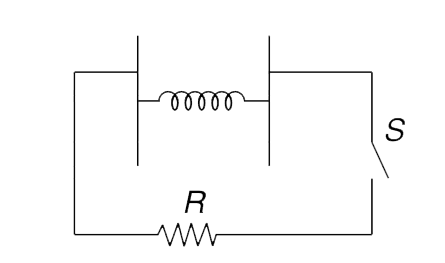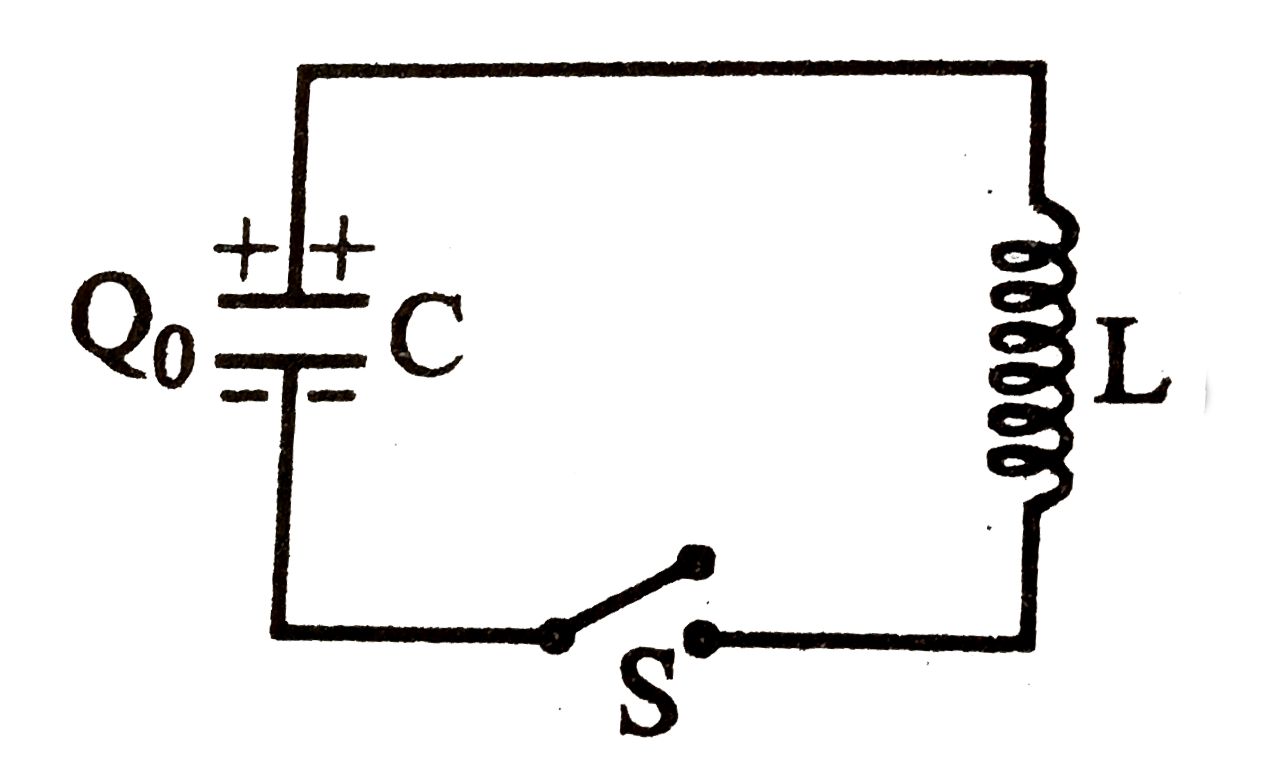A parallel plate capacitor has its two plates connected to an ideal spring of force constant K. Relaxed length of spring is L and it is made of non conducting material. The area of each plate is A. The capacitor has a charge q0 on it. To discharge the capacitor through the resistance R, switch S is closed.
If the time constant of the circuit is very large and discharge process is very slow, how much heat will be dissipated in the resistance? Assume that there is no friction and the plates always remains parallel to each other.

The correct Answer is:q20L2∈0A−q408∈20A2k
Topper's Solved these Questions
Similar Questions
Knowledge Check
A parallel plate capacitor C has a charge Q. The actual charges on its plates are
AQ,QBQ/2, Q/2CQ,-QDQ/2. - Q/2A parallel plate capacitor has the space between its plates filled by two slabs of thickness d2 each and dielectric constant K1 and K2. d is the plate separation of the capacitor. The capacitance of the capacitor is
A2ε0Ad(K1+K2K1K2)B2ε0Ad(K1+K2)C2ε0Ad(K1K2K1+K2)D2ε0dA(K1+K2K1K2)In a parallel-plate capacitor of plate area A, plate separation d and charge Q the force of attraction between the plates is F.
AF∝Q2BF∝1ACF∝dDF∝1d
A capacitor C with a charge Q0 is connected across an inductor through a switch S. If at t=0, the switch is closed, then find the instantaneous charge q on the upper plate of capacitor.

View SolutionA parallel-plate capacitor with plate are 20cm2and plate separation 1.0mm is connected to a battery .The resistance of the circuit is 10k(Ω).Find the time constant of the circuit.
View SolutionA parallel-plate capacitor with plate are 20cm2and plate separation 1.0mm is connected to a battery .The resistance of the circuit is 10k(Ω).Find the time constant of the circuit.
View SolutionImagine a light planet revolving around a very massive star in a circular orbit of radius r with direction T. On what power of r, will the square of time period depends if the gravitational force of attraction between the planet and the star is proportional to r−5/2 .
View SolutionIn a parallel plate capacitor with plate area A and charge Q, the force on one plate because of the charge on the other is equal to
View Solution
